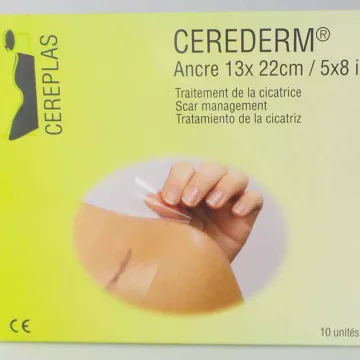


What is a scar and how does it form?
A scar is the result of the body's natural healing process after an injury to the skin. When a deep layer of skin is damaged, the body produces a new protein fiber, collagen, to repair the wound. This new skin is generally thicker and less supple, forming a scar.
What are the different types of scar?
There are several types of scar, each with distinct characteristics:
How can scars be prevented?
Scar prevention starts with proper wound care:
What are the best ways to treat scars?
Scar treatment depends on the type and severity of the scar. Here are some common options:
When should I consult a dermatologist about a scar?
It is advisable to consult a dermatologist if :
How can natural remedies help reduce scarring?
Natural remedies can play a complementary role in the treatment of scars, although they do not replace advanced medical treatments. Aloe vera is renowned for its healing and moisturizing properties. Rosehip oil, rich in essential fatty acids, can also help improve the texture and pigmentation of scars. However, it's important to consult a healthcare professional before starting any natural treatment, especially if the scarring is severe.
Are there any differences in the treatment of scars in children versus adults?
Yes, scar treatment can vary between children and adults due to differences in skin regeneration and immune response. Children generally have a faster healing capacity, which can lead to faster scarring but also an increased risk of hypertrophic scars. Treatments for children should be supervised by a pediatrician or dermatologist specializing in pediatric skin care to ensure safety and efficacy.
What psychological impact can scars have?
Scars can have a significant psychological impact, particularly in terms of self-confidence and self-perception. People with visible scars may experience anxiety, depression or social embarrassment. It is crucial to address these aspects when treating scars, considering, if necessary, psychological support to help individuals manage these feelings.
How is modern technology helping to improve scar treatment?
Modern technology has greatly improved scar treatment. Fractional lasers, for example, can reduce the texture and pigmentation of scars by creating tiny areas of damage that stimulate natural collagen production without damaging the skin's surface. Ultrasound and radiofrequency therapies are other options that improve the appearance of scars by stimulating skin regeneration at a deeper level.
What precautions should I take when exposing scars to the sun?
It's essential to protect scars from direct exposure to the sun. UV rays can make scars more visible and delay the healing process. Using a broad-spectrum sunscreen (SPF 30 or higher) is essential to cover scarred areas. In addition, wearing protective clothing and avoiding the sun at peak hours will help minimize UV damage to scars.